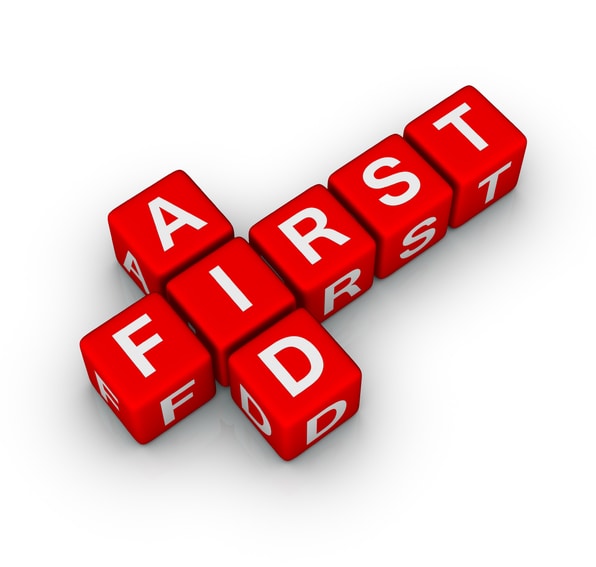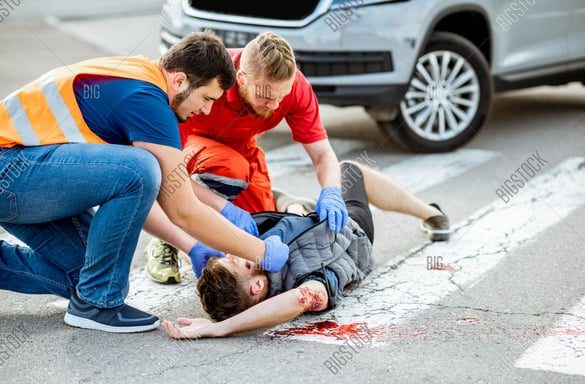Back to: PHYSICAL HEALTH EDUCATION JSS 2
Welcome to Class !!
We are eager to have you join us !!
In today’s Physical Health Education class, We will be discussing First Aid Treatment. We hope you enjoy the class!

FIRST AID TREATMENT
Domestic accident Causes and First Aid treatment
No matter how much we strive to make our domestic environment as safe as possible, accidents at home can still happen – even in the most conscientious of households. When it comes to the health of our families, especially for those with young children, it makes sense to know exactly what to do if these common scenarios do occur.
Here are some of the most common accidents that can happen in the home and how to deal with them:
Falling objects:
When children start to move around on their own, there is an increased danger of them pulling objects down on top of themselves.
Being conscious of your kids’ health means making sure any trailing electrical leads, tablecloth edges and dish towels are out of reach in order to help prevent accidents happening.
Trips and Falls:
A fall can affect people of all ages, but they are most common amongst the very young and the very old. Often, falling over as a child will only hurt their pride and a few soothing words is all that’s needed. However, if the person who has fallen subsequently becomes drowsy, vomits or loses consciousness, it is important to seek medical advice.
Bruises:
Even a fall that isn’t serious can lead to nasty bruising which can be quite painful. Applying a cold pack – or even a packet of frozen peas – to the area affected can reduce swelling. Sometimes severe bruising can hide more serious issues such as broken bones, so if there is a great deal of continuous pain or movement of a limb is very restricted or impossible, once again professional help should be sought.

Sprains:
A sprain is when a ligament, which connects parts of a joint, is stretched, twisted or torn. Knees, ankles and wrists are the most common parts of the body affected. If this occurs, apply an ice pack from your first aid kit, rest the affected area and give it time to heal.
Cuts:
Any cut means that there will be some blood, and this can be one of the most difficult things involved in first aid for children. Apply pressure to stop the bleeding and apply an antiseptic to the area. Assessing the situation is important, but (generally speaking) if the blood stops after applying pressure, it is likely to be a minor cut that will not need stitches.
Burns:
Hot drinks cause most burns and scalds to children under the age of five and, of course, children should be kept a safe distance away from open fires, cookers, irons, hair straighteners and matches, as these can be dangerous too. Any burn should be held under cold running water for ten minutes and then assessed. Having a clean plastic bag or cling film in your first aid kit can be an ideal way to cover burns to keep them clean and help them to heal.
Choking:
Children can often have a fascination with putting objects in their mouth and swallowing them, meaning that choking is a common hazard. If you cannot dislodge the object promptly, then call a medical professional.
Poisoning:
Most poisoning incidents involve medicines, household products and cosmetics around the house. It is important, therefore, to keep anything that might be dangerous if swallowed well out of reach of children as an essential part of first aid in the home.
Glass-related injuries:
Broken glass can cause serious cuts and so use of the material around the home in furniture or fittings should be carefully considered if you have a young family. Make sure doors, tables and shelving conform to British safety standards.
Road accident Causes and First Aid treatment

Road accidents occur for a variety of reasons. Often, drivers are distracted while behind the wheel, taking their focus away from the road. In other cases, drivers can become tired after spending multiple hours at the wheel, resulting in preventable errors.
Sometimes, accidents occur for a combination of reasons, from bad visibility to unsafe road design, or other drivers lack caution. While the causes of accidents can vary, the consequences are often the same, resulting in everything from vehicular and property damage to serious injuries.
Causes of Road Accidents
The following are the causes of road accidents:
- Poor conditions of the engine
- Over speeding
- Lack of concentration
- Poor weather condition
- Lack of road/route signs
- Sudden mechanical breakdown
- Dangerous overtaking
Should you be the first on scene at an accident:
- Your own safety must be the priority when approaching the scene of an accident. Make sure that all traffic has stopped, and that people have been alerted that there has been an accident to prevent additional casualties.
If there is any spilt fuel or other fire hazards turn off car ignitions. Always turn on vehicle hazard lights and use a warning triangle if there’s one available.
- If other people are around, get them to phone the emergency services however if you are on your own, first assess the situation and treat any life-threatening conditions first and then call for an ambulance.
- Quickly establish how many vehicles have been involved and assess the occupants of all the vehicles to ensure none of the casualties has life-threatening injuries. People screaming, crying and making a noise must be breathing – your priority at this point is to check anyone quiet and not moving.
If anyone is not moving:
Ascertain whether they’re responsive or not. If there is no response, check if they are breathing.
Unresponsive and breathing:
Ensure they are in a position where they are leaning forward or to one side to ensure the airway remains open. Move them as little as possible and avoid twisting them. Keep talking to the casualty calmly as they can hear you, even if they are unconscious. Keep them warm.
Unresponsive and not breathing:
If the person is not breathing, you will need to resuscitate them and if you are on your own and haven’t called an ambulance yet, you must do so at this point. If necessary, ask their advice on the best way to resuscitate as it’s not easy to do if they are in a car.
Only attempt to remove an unconscious person from their vehicle if there is an immediate danger to their life, e.g. from fire, flood, or explosion.
We have come to the end of this class. We do hope you enjoyed the class?
Should you have any further question, feel free to ask in the comment section below and trust us to respond as soon as possible.
In our next class, we will be talking about Preventing Injuries and Accidents. We are very much eager to meet you there.
